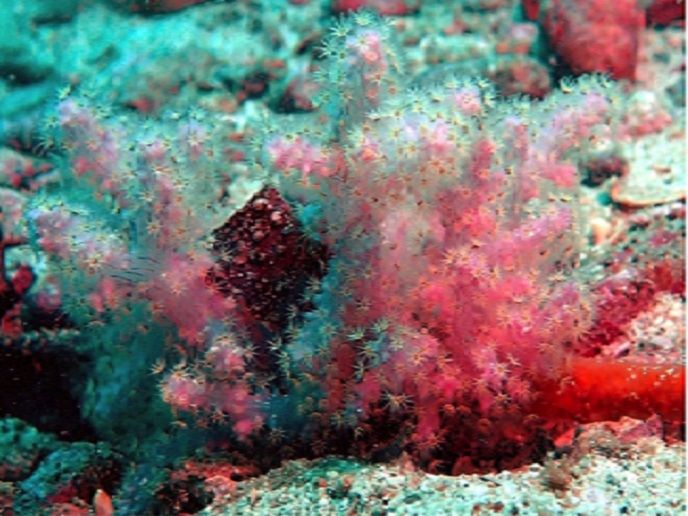Blue biotech research from academia to industry
Diatoms are silicified one-cell algae of small size that live in abundance in nearly all habitats of water. The diatom Haslea ostrearia is considered a ubiquitous tychopelagic(opens in new window) species living in both warm and tropical waters. H. ostrearia appears unique because of its extraplastidial bluish colour, owed to the presence of a water-soluble blue pigment at cell apices, marennine(opens in new window). Once released in seawater, marennine can be fixed on the gills of bivalves, which turn green. This transformation is economically exploited in bivalve aquaculture as it gives added value to seafood, while this natural pigment is usable in food or cosmetics production. With the support of the Marie Skłodowska-Curie Actions programme, the GHaNA(opens in new window) project explored the biodiversity of the diatom genus Haslea for blue biotechnology applications.
Making the most of Haslea’s ecophysiology for high-value products
GHaNA studied natural blooms of blue Haslea in the Atlantic Ocean (North Carolina, USA), the Mediterranean Sea (Corsica, France) and the Adriatic Sea (Croatia), which should help design ad hoc photobioreactors. Focus was given at the screening of the supernatants and the biomass of microalgae cultures, as well as the extraction, purification and chemical structure identification of high value compounds. The outcome was an increased knowledge of the diversity of the genus, with four blue and three non-blue new species of Haslea discovered, and a draft genome of the species H. ostrearia, with ongoing annotation. Coming from widespread geographic locations, the different autecological, pigmentation and physiological traits of the Haslea species could optimise their culture in photobioreactors (PBRs), predict the responses of these organisms to global climate change, and thereby select strains for particular solar PBR applications. GHaNA studied their photoadaptation and photoacclimation strategies by comparing species and strains from the same genus but originating from different geographic areas, from the Arctic to the Equator. The team achieved progress in the design of PBR and production of marennine using ultrafiltration membranes. Being a key metabolite for industrial applications, marennine was colourimetrically tested regarding its stability of pH, light and temperature, after its incorporation within an emulsion for use as a colourant. GHaNA also investigated key terpenoid synthesis pathways and enzymes in Haslea. Moreover, it studied the chemical diversity of isoprenoids produced by different Haslea strains, and the influence of environmental factors and geographic distribution in the chemical composition and production levels. Next to increasing the market value of bivalves, marennine displays allelopathic and antimicrobial properties, which could counteract pathogens responsible for high mortality events in oyster mariculture, but also in the larval culture of various bivalve species. The research elucidated further the marennine structure. A polydisperse heteropolysaccharide(opens in new window) has been associated with a still uncharacterised chromophore(opens in new window), while the preventive and anti-bacterial effects of marennine were assessed and applied to bivalve hatchery production.
Boosting blue biotechnology academic research and its industrial applications
“On the academic side, the most important beneficiaries are obviously the many ESRs who made the secondments. This experience will help make them efficient, mobile across different countries, independent and organised researchers,” notes project coordinator Jean Luc Mouget. The outcomes regarding fundamental and applied research will significantly enhance the microalgae sector in Europe for possible biotechnological applications in food, health and biomaterials. “This will be explored further with the support of the new European programme Doctoral Networks(opens in new window) where an application has just been submitted,” Mouget informs us.







